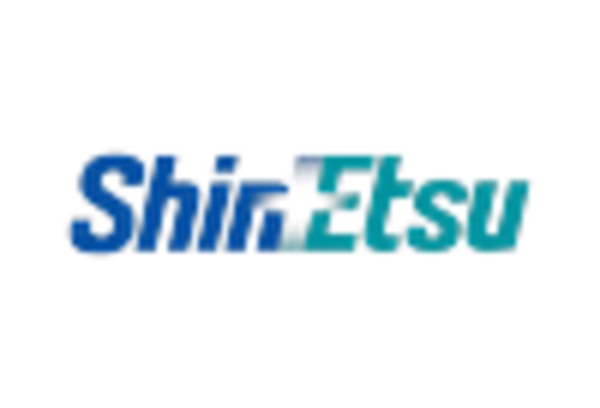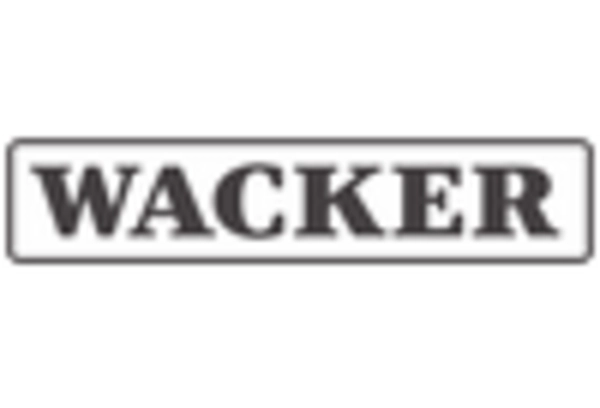China : Unmatched Growth and Demand Trends
China holds a commanding market share of 55% in the APAC silicone rubber market, valued at $550.0 million. Key growth drivers include rapid industrialization, increasing automotive production, and a booming electronics sector. Demand trends indicate a shift towards high-performance silicone products, driven by government initiatives promoting sustainable manufacturing practices. Infrastructure development, particularly in urban areas, further supports this growth trajectory.
India : Rapid Growth in Diverse Sectors
Key markets include Maharashtra, Tamil Nadu, and Gujarat, where industrial hubs are thriving. The competitive landscape features major players like Dow and Wacker Chemie, alongside local manufacturers. The business environment is becoming increasingly favorable, with investments in R&D and innovation. Applications in automotive seals, medical devices, and consumer products are expanding, reflecting the diverse industrial landscape.
Japan : High-Quality Production Standards
Key markets include Tokyo, Osaka, and Aichi Prefecture, which are home to major industrial players. The competitive landscape is characterized by strong local companies like Shin-Etsu Chemical and Momentive. The business environment is robust, with a focus on innovation and sustainability. Applications in automotive components, electronic devices, and medical equipment are prevalent, showcasing Japan's leadership in high-tech industries.
South Korea : Innovative Solutions for Industry Needs
Key markets include Seoul and Busan, where major industrial activities are concentrated. The competitive landscape features significant players like Hexpol and local manufacturers. The business environment is dynamic, with a focus on technological advancements and sustainability. Applications in consumer electronics, automotive parts, and industrial machinery are expanding, reflecting the country's industrial strength.
Malaysia : Strategic Location and Development
Key markets include Selangor and Penang, which are industrial hotspots. The competitive landscape includes both international players and local manufacturers. The business environment is favorable, with incentives for R&D and innovation. Applications in automotive seals, construction materials, and consumer products are growing, reflecting Malaysia's expanding industrial base.
Thailand : Diverse Applications and Demand
Key markets include Bangkok and Chonburi, where industrial activities are concentrated. The competitive landscape features both local and international players, including major companies like Dow. The business environment is dynamic, with a focus on innovation and quality. Applications in automotive components, medical devices, and consumer goods are expanding, showcasing Thailand's diverse industrial landscape.
Indonesia : Rising Demand in Key Sectors
Key markets include Jakarta and Surabaya, where industrial activities are growing. The competitive landscape features both local and international players, with opportunities for new entrants. The business environment is becoming increasingly favorable, with investments in R&D and innovation. Applications in automotive seals, construction materials, and consumer products are expanding, reflecting Indonesia's growing industrial base.
Rest of APAC : Varied Applications Across Regions
Key markets include Vietnam, Philippines, and Singapore, each with unique industrial landscapes. The competitive landscape is fragmented, with both local and international players vying for market share. The business environment is diverse, with varying levels of investment in R&D and innovation. Applications in automotive components, medical devices, and consumer products are prevalent, reflecting the varied needs of these markets.
















Leave a Comment